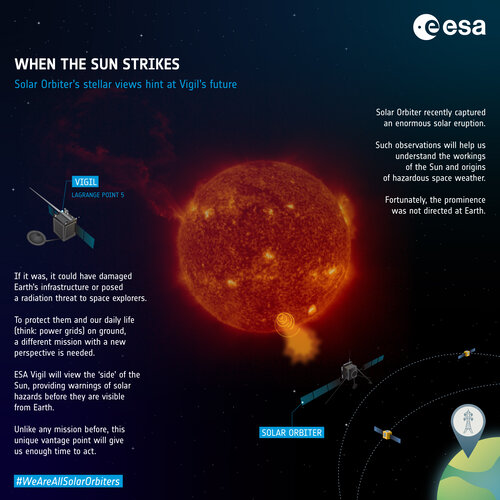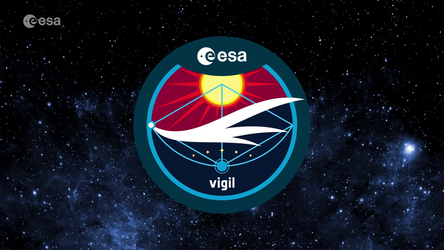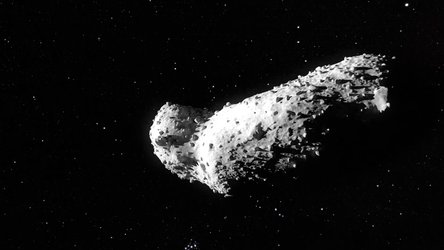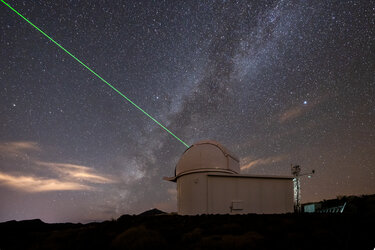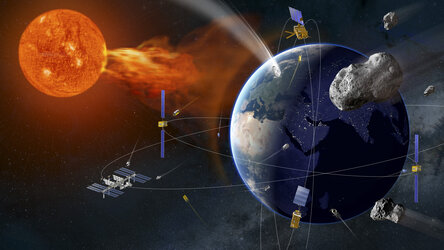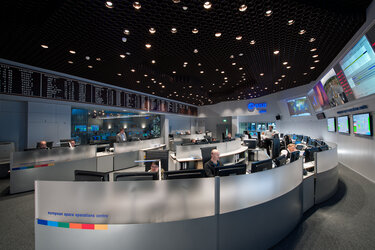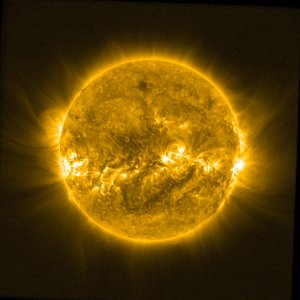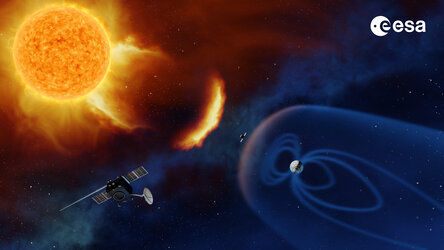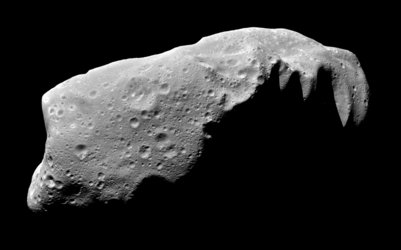New home for Earth’s protectors
In brief
ESA’s new Space Safety Centre is a hub for activities protecting our planet from a raging star, risky asteroids and defunct satellites.
ESA Director General Josef Aschbacher inaugurated the Centre today at the Agency’s ESOC mission control centre, in Darmstadt, Germany.
In-depth
Living close to an active star, in a Solar System filled with ancient and fast-moving asteroids, on a planet that is becoming increasingly surrounded by discarded satellites and their debris, comes with a plethora of challenges. ESA’s Space Safety programme carries out the activities necessary to mitigate and prevent the effects of these hazards.
Inaugurated on 12 April, the new Space Safety Centre is a dedicated facility for the teams monitoring and responding to space weather. Electromagnetic radiation and charged particles hurled into space by the Sun can disrupt or damage active satellites, human space explorers and infrastructure on Earth such as power grids.

“This new ESA facility demonstrates the ambition of Europe to have its critical missions in orbit and civil infrastructure on ground well protected against hazards from space,” says ESA Director General Josef Aschbacher.

“In close cooperation with its Member States, ESA is contributing to more autonomous and resilient space programmes, today and in the future.”
By monitoring the health of data arriving on Earth from our satellite instruments and from other space weather services, teams at ESA help keep spacecraft and astronauts safe from our star’s unpredictable outbursts, while contributing to the protection of civil infrastructure, like power grids, on ground.
Building autonomy for Europe
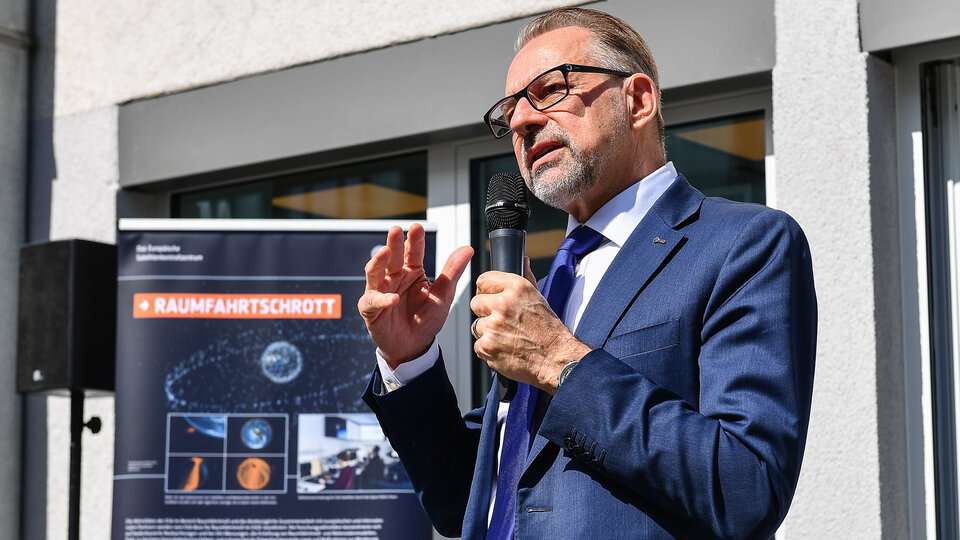
The Space Safety Centre is a first for ESA and provides a dynamic environment where next-generation space-weather capabilities, tools and models will be developed, tested and evaluated in close cooperation with European institutes and industry.
The Centre also supports the provision of space weather information and warnings to ESA-operated space missions. It will work in close coordination with the Agency’s Space Weather Services Network, providing timely and reliable space weather information to European spacecraft operators, agencies, institutions, researchers and commercial sectors affected by solar activity including transportation, navigation and power grid operators.
Teams at the Centre will monitor data received from ESA’s space weather sensors, comprising, today, payloads onboard Proba-2 and hosted on missions flown by other agencies and, in future, additionally from the Vigil and Aurora missions and from new nanosatellite missions.
In future, it will also be used to monitor the utilisation of data acquired by ESA’s three upcoming space safety missions.
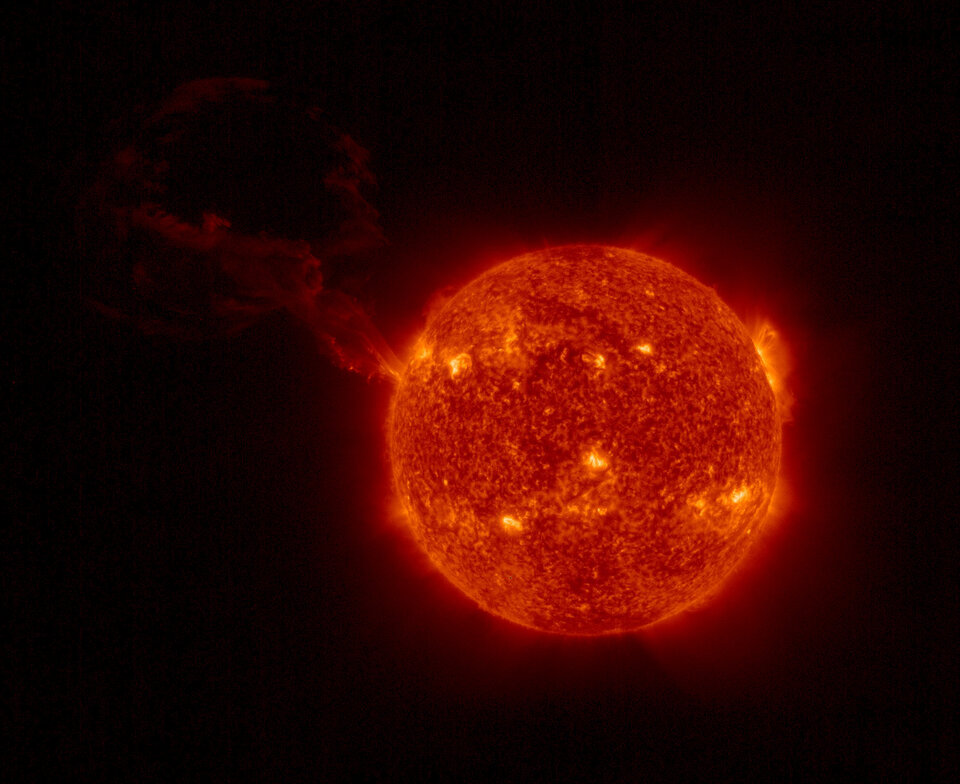
“The stand-up of this Centre at our ESOC mission control centre demonstrates leadership and is a clear step as ESA works to boost European autonomy in space,” says Rolf Densing, ESA’s Director of Operations.
“A major space weather event could cause in excess of €15 billion damage in Europe. We cannot prevent space weather, but costly ground infrastructure and satellites – and the critical services they provide – can be protected through forecasts, timely warnings and real-time information.”
Upcoming ESA Space Safety Missions
Vigil
ESA Vigil will monitor our active and unpredictable Sun to help protect us from its violent outbursts.
By keeping an eagle eye on the 'side' of the Sun, the spacecraft will stream a constant feed of near real-time data on potentially hazardous solar activity, complementing observations from other missions and enabling more accurate forecasting of space weather impacts on Earth. Vigil, planned to launch in the 2028 timeframe, will give us advance warning of oncoming solar storms and therefore more time to protect spacecraft in orbit, vital infrastructure on the ground and space explorers now and in the future not shielded by Earth's magnetic field.


Access the video
Hera
Due to launch in 2024, Hera will examine the aftermath of the first kinetic impact test of asteroid deflection, carried out by NASA’s DART mission.
Europe’s flagship Planetary Defender will turn the grand-scale experiment into a well-understood and repeatable planetary defence technique. Demonstrating new technologies, from autonomous navigation around an asteroid to the use of CubeSats in deep space, Hera will be humankind’s first probe to rendezvous with a binary asteroid system and fully validate a planetary defence technique.

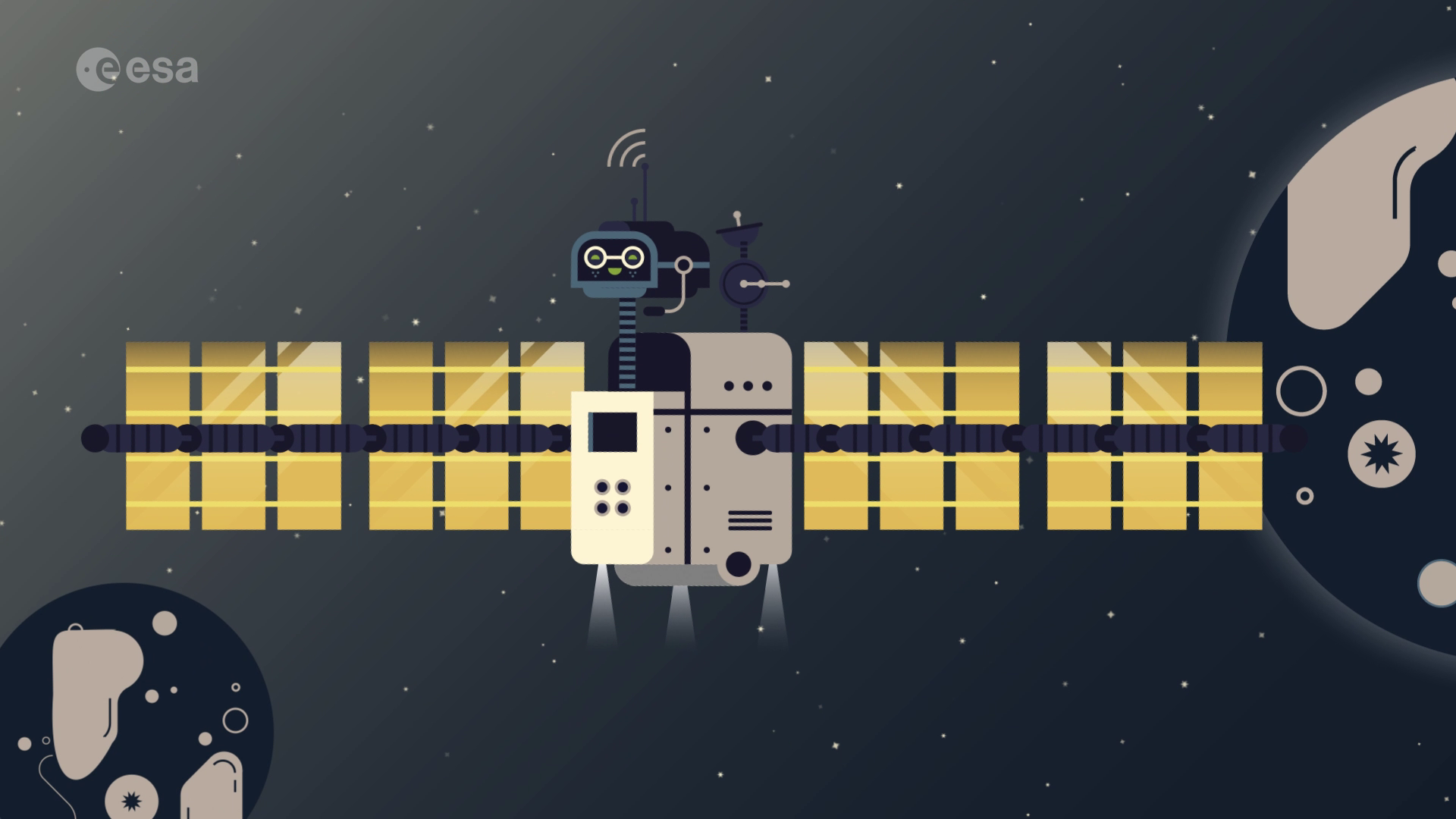
Access the video
ClearSpace-1
The first mission to remove a piece of space debris from orbit, Clearspace-1 will rendezvous with, capture and safely bring down a 112-kg derelict object for a safe atmospheric re-entry.
Conceived by the ESA Clean Space team, the Agency is purchasing it as a service from the Swiss start-up ‘Clearspace SA’ to demonstrate the technologies needed for debris removal and as a first step to establishing a new and sustainable commercial sector in space. The mission is in development now for launch in the 2026 timeframe.

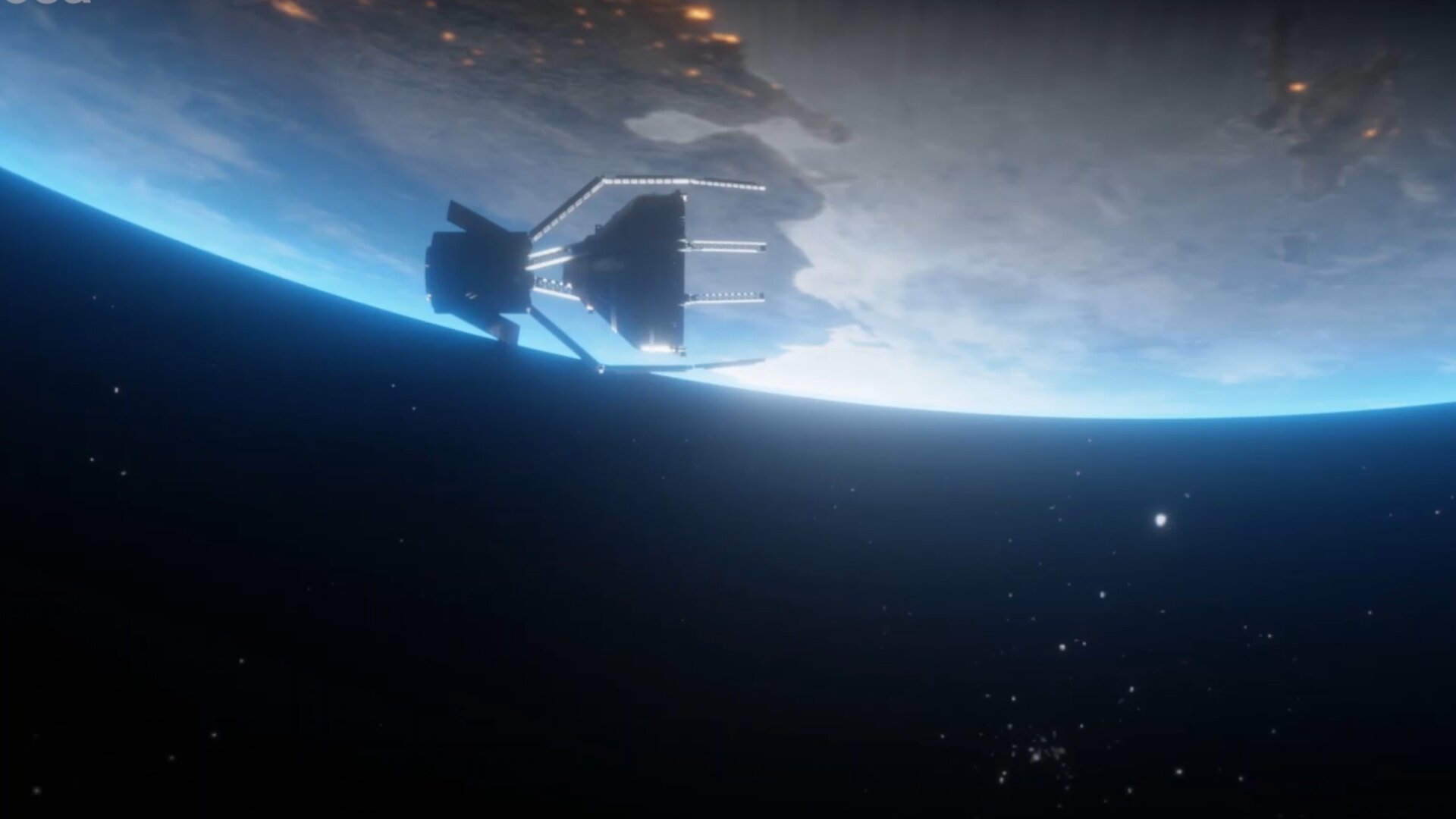
Access the video














 Germany
Germany
 Austria
Austria
 Belgium
Belgium
 Denmark
Denmark
 Spain
Spain
 Estonia
Estonia
 Finland
Finland
 France
France
 Greece
Greece
 Hungary
Hungary
 Ireland
Ireland
 Italy
Italy
 Luxembourg
Luxembourg
 Norway
Norway
 The Netherlands
The Netherlands
 Poland
Poland
 Portugal
Portugal
 Czechia
Czechia
 Romania
Romania
 United Kingdom
United Kingdom
 Slovenia
Slovenia
 Sweden
Sweden
 Switzerland
Switzerland



























